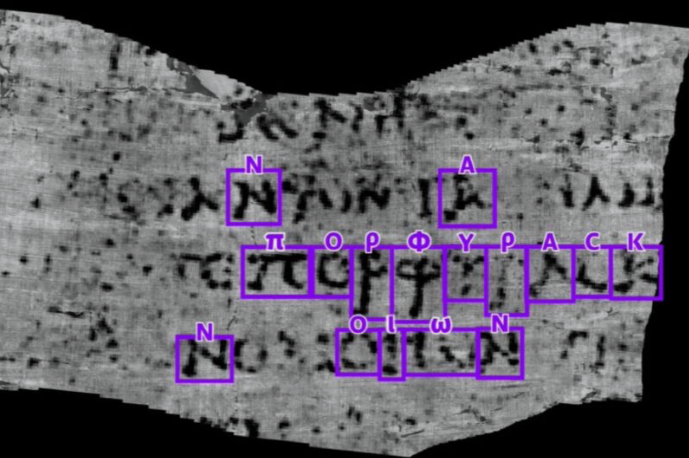The first text from a Herculaneum scroll which came from the Ancient Roman era has been deciphered by a computer science student with the help of an AI, with him training it to recognize the pattern and ink in the material. However, this was a massive challenge as the text from these scrolls was deemed "unreadable," as it was originally charred by the devastating eruption of Mount Vesuvius.
Organizers and groups called this the "Vesuvius Challenge," with Luke Farritor, winning $40,000 for his successful attempt in uncovering the message.
Ancient Herculaneum Scroll Message Unveiled using AI

The organization that held the Vesuvius Challenge has announced the first-ever deciphering of an Ancient Herculaneum papyri, with Farritor successfully uncovering the texts it held inside it. Luke Farritor, also a SpaceX summer intern working at Starbase, used his free time to uncover the texts of the past and was inspired by an earlier discovery by Casey Handmer in finding the ink patterns.
Through Handmer's discovery, Farritor used machine learning to train the system to detect the patterns and letters found in the unopened scrolls, seeing the "crackle" patterns of the ink which the AI uncovered one after the other.
With the data he uncovered, the AI learned and was able to determine different letters and patterns in the writing, revealing the word "ΠΟΡΦΥΡΑϹ" or "porphyras."
Read Also : Scientists Confirm Ancient Footprints in New Mexico to Be the Oldest Sign of Humans in Americas
Vesuvius Challenge: Deciphering Ancient Roman Text
Porphyras translates to purple, and is considered rare in the ancient Roman text. According to a papyrologist, "The sequence πορφυ̣ρ̣ας̣ may be πορφύ̣ρ̣ας̣ (noun, purple dye or cloths of purple) or πορφυ̣ρ̣ᾶς̣(adjective, purple)."
Farritor's discovery was followed by Youssef Nader who discovered the same word in the area but with better distinction of the letters. The Vesuvius Challenge remains optimistic that someone could take the grand prize in uncovering more of what the scrolls hold secret until now.
Ancient Writings and MORE Uncovered
While some archaeologists and researchers prefer to study ancient items or objects through traditional methods, some academics welcome the use of modern technology, particularly in employing AI to help them understand more of the past. DeepMind introduced a new AI tool called "Ithaca" last year and it helps study the remnants of a specific object and help recover the lost parts to get the whole.
One of the most destructive events in human history is with the fall of Pompeii due to the eruption of Mt. Vesuvius, with Rome preserving the site up to the modern age. However, it was recently found to be contaminated due to plaster, as the new study revealed that the ancient remains were affected by this cast to preserve the bones, particularly on its elemental profiles.
As much as bones and other structures were important to preserve from Pompeii and Mt. Vesuvius' effects, other parts of the Ancient Roman civilization were also affected. The Vesuvius Challenge called upon bright minds and those who share the advocacy to uncover the messages of the past, and despite their almost unretrievable status, AI has helped pave the way to deciphering the content in these scrolls.
Related Article : Amazon Forests May Still Be Hiding Over 10,000 Ancient Structures, According to Archaeologists





